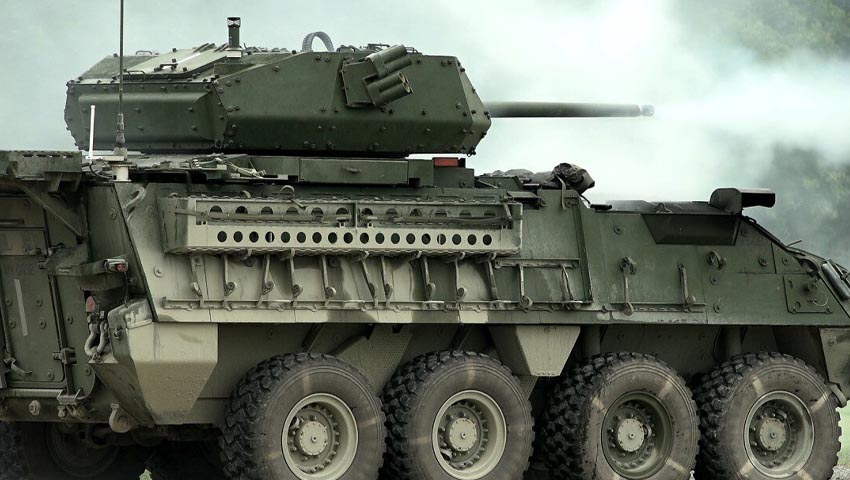Advances in Russian designed armoured fighting vehicles and tanks have prompted the US Army to initiate a series of modernisation and capability enhancements for its Double V-Hull A1 (DVH A1) Stryker Infantry Carrier Vehicles, which centre on the introduction of a specialised 30mm Medium Calibre Weapon System (MCWS).
To continue reading the rest of this article, please log in.
Create free account to get unlimited news articles and more!
Based on an urgent operational need out of Europe, the Army was provided emergency funding from Congress in 2015 — a little over US$300 million — to rapidly develop and field a Stryker with a 30mm cannon specifically for the US Army's 2nd Cavalry Regiment, which is permanently stationed in Germany. This emergency funding also covered upgrades to 83 production vehicles plus spares.
The US subsidiary of Canberra-based EOS Defence Systems; EOS Defense Systems USA has secured US$81,940 as part of the Stryker Lethality Design Integration Study alongside General Dynamics Land Systems, Kollsman, Leonardo DRS, Raytheon and Pratt & Miller Engineering and Fabrication.
The companies have to come up with integration designs using a government-furnished XM813 gun on a government furnished Stryker DVH A1 hull. The MCWS program will be carried out in two phases that will culminate in equipping a Stryker DVH A1 brigade in fiscal year 2022, according to the Army.
The US Army's request for quotation (RFQ) solicits contractors to perform a design integration study (DIS) to integrate a weapon station using a government-furnished XM813 gun. The XM813 is based on the Mk44 Bushmaster II designed and manufactured by Northrop Grumman and is offered as an upgrade for M1126 Stryker and M2 Bradley vehicles, as well as having been a contender to be the primary armament of the GCV infantry fighting vehicle.
Improvements include a one-inch longer barrel, integral mount to increase first round hit probability by up to 10 per cent, a dual recoil system to enhance accuracy and cope with future hotter propellants, and a Meggitt linkless dual feed ammunition system.
The 30mm chain gun can fire Mk310 Programmable Air Burst Munition rounds to attack targets in defilade. The US Army Research, Development and Engineering Command helped enhance the XM813 mainly for safety and turret integration, additionally, by changing five parts, the gun calibre can be increased to 40mm.
While the US Army plans to initially procure three brigade sets of the Stryker MCWS DVH A1 — a total of 83 vehicles per brigade — the service could procure systems for additional brigades at future decision points.
Unrelated to this opportunity in the US, EOS in Australia has tendered their T-2000 turret for the Australian Army's LAND 400 Phase 3 project with partner Hanwha. The company's T-2000 turret system is a collaborative development between EOS and Israeli Elbit Systems, providing a next-generation, medium-calibre turret and incorporates a number of key technology and capability enhancements, including:
Stephen Kuper
Steve has an extensive career across government, defence industry and advocacy, having previously worked for cabinet ministers at both Federal and State levels.

 Login
Login








